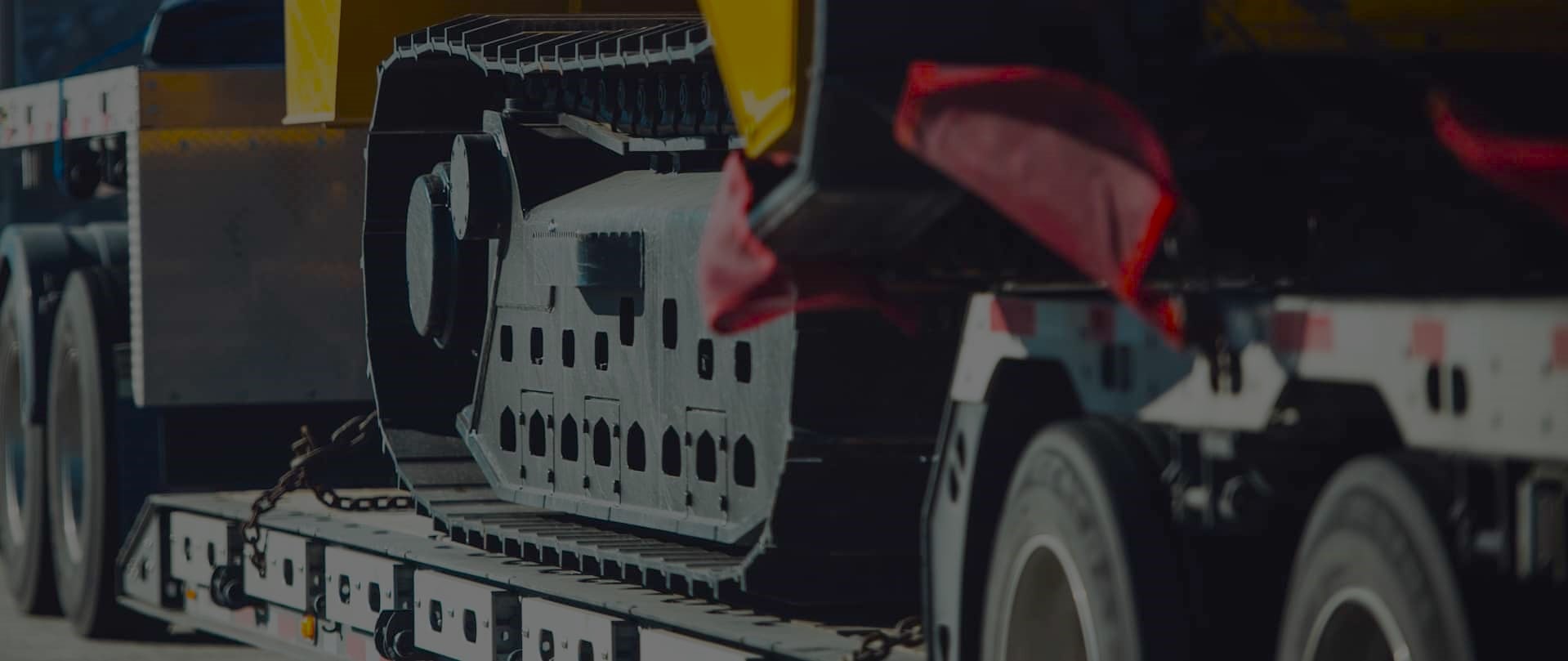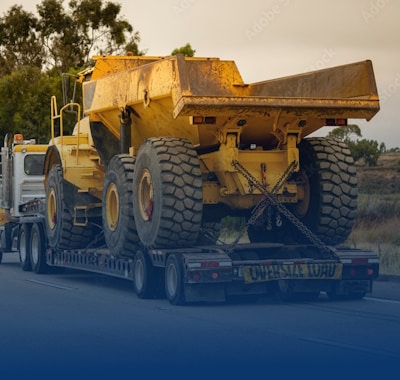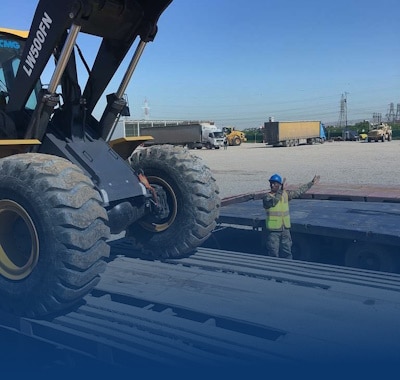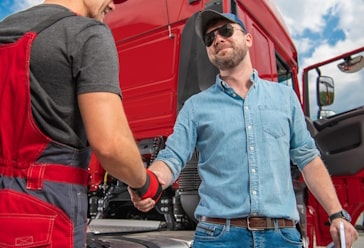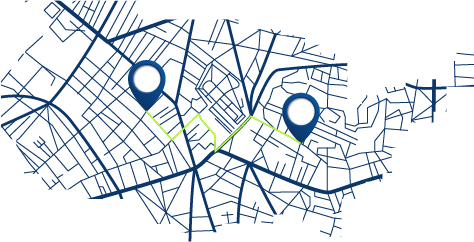Escort Vehicle Requirements for Wide Loads Explained
Freedom Heavy Haul can offer expedited Pickup and Delivery for any size shipment anywhere in the USA. Contact us today for No Hassle, No Pressure Pricing.
Moving oversized freight isn’t just about having the right truck—it’s about keeping everyone safe. Special escort vehicles play a crucial role in ensuring these massive shipments travel securely. They help navigate tight roads, warn other drivers, and follow strict legal guidelines.
Every state has different rules for moving large loads. Missing a permit or skipping safety steps can lead to fines or accidents. That’s why knowing the exact requirements matters. Proper planning prevents costly delays and keeps roads safe for everyone.
Need expert help? Companies like Freedom Heavy Haul specialize in oversized freight logistics. With decades of experience, they handle permits, route checks, and safety protocols so you don’t have to.
What Are Escort Vehicles for Wide Loads?
Specialized cars work behind the scenes to ensure massive freight moves without a hitch. These support teams—pilot cars and pole cars—act as extra eyes, keeping shipments and roads safe.
Roles of Lead and Chase Pilot Cars
A lead pilot car scouts ahead, checking routes for hazards like low bridges or tight turns. Meanwhile, the chase car follows the load, monitoring rear traffic and signaling lane changes.
“Real-time radio chatter between drivers is critical,” says a veteran hauler. This communication prevents surprises and keeps the convoy synchronized.
Pole Cars for Over-Height Shipments
For tall loads, pole cars test clearances first. Their extendable 14–16-foot poles mimic the shipment’s height, ensuring bridges or wires won’t snag the main cargo.
In cities, police escorts sometimes replace civilian pilot cars to manage traffic. But their goal remains the same: driver safety and smooth deliveries.
Escort Vehicle Requirements for Wide Loads: When Are They Needed?
Rules for extra safety cars depend on your cargo’s size and route. National standards help determine when they’re mandatory—but states can add stricter rules.
General Thresholds: Width, Height, and Length
Most states require support vehicles when shipments hit these sizes:
- Width: 12 feet or more
- Height: Over 14.5 feet
- Length: Exceeds 90 feet
Wind turbine blades often need dual escorts due to their extreme length. USDOT data shows proper teams reduce accidents by 37%.
Police vs. Civilian Safety Teams
Police often step in for urban routes or loads over 15’ wide. They manage traffic lights and congested areas. Civilian teams handle highways and rural roads.
Some shipments—like stadium construction parts—need both. Always check local laws before moving oversized freight.
State-by-State Escort Vehicle Regulations
Navigating oversized shipments across state lines? Rules change at every border. The Department of Transportation sets baseline guidelines, but local regulations often add extra layers. Missing a detail could mean fines or rerouted cargo.
Width Requirements by State
Texas mandates a safety team at 12 feet wide, while California waits until 14 feet. Some states, like Oregon, require flags or signs even below these thresholds. Always check the latest state rules—online portals update annually.
Height Requirements by State
New York triggers escorts at 14 feet, but Florida allows up to 15’6″. Mountainous regions like Colorado may enforce lower limits due to tunnels. Seasonal restrictions (e.g., winter ice) can further reduce clearances.
Length Requirements by State
Loads exceeding 90 feet typically need support. However, Nebraska permits 110-foot combinations with permits. For wind turbine blades, stacked requirements often apply—width + length = extra escorts.
“Our clients use ATS’s state database to avoid surprises. A 13-foot load might need no team in Nevada but two in Ohio.”
Pro tip: Download a regulations cheat sheet or partner with a provider who tracks real-time changes. Summer construction or holiday traffic? Adjust plans early.
How to Arrange Escort Vehicles for Your Shipment
Planning a smooth move for oversized cargo starts with the right support. Proper coordination ensures your shipment stays on schedule while meeting all legal standards. Here’s how to secure the help you need.
Partnering With Transportation Experts
Working with a trusted company can simplify the process. Providers like ATS connect you with 500+ certified teams nationwide. They handle permits, route surveys, and last-minute adjustments.
“A reliable partner cuts delays by 40%,” notes a logistics manager. Look for these credentials when choosing a service:
- FMCSA-approved documentation
- Valid insurance coverage
- Real-time GPS tracking
For complex moves—like wind turbine blades—some shipments need three safety cars. A detailed case study shows how proper planning avoids bottlenecks.
Timing Your Request Right
Police support in cities like Chicago or Los Angeles requires 14–21 days’ notice. Rural routes may need less lead time, but always confirm early. Use this checklist to stay ahead:
| Step | Action | Deadline |
|---|---|---|
| 1 | Submit permit applications | 30 days prior |
| 2 | Book safety teams | 14–21 days prior |
| 3 | Finalize route checks | 7 days prior |
“Unexpected detours happen. Our teams reroute within hours using live traffic data.”
Keep emergency contacts handy for sudden changes. With the right prep, your cargo arrives safely—and on schedule.
Certification Requirements for Escort Vehicle Drivers
Getting certified as a safety team member involves more than just driving skills. States like New York enforce strict training to ensure drivers can handle complex routes and emergencies. Whether you’re local or from out-of-state, understanding these rules keeps shipments—and highways—safe.
New York’s 7-Step Certification Process
To operate in NY, drivers must:
- Be 21+ years old with a valid license.
- Pass a $40 written test (offered at 12 DMV locations statewide).
- Clear vision and hearing screenings.
- Provide a 3-year clean driving record.
- Disclose any DUI history (automatic disqualifier if within 5 years).
- Complete a 4-hour safety workshop.
- Submit proof of insurance.
“NY’s test focuses on bridge clearances and urban routing,” says a Buffalo-based trainer. Study materials are available through the NY DMV portal.
Out-of-State Drivers: What to Know
Even with certification from Texas or Florida, NY requires its own approval. Neighboring states like NJ and PA have lighter rules—but crossing into NY? Prepare for extra steps.
| State | Test Fee | Age Minimum | Reciprocity |
|---|---|---|---|
| New York | $40 | 21 | No |
| New Jersey | $25 | 18 | Partial* |
| Pennsylvania | $30 | 19 | No |
*NJ accepts some NY training hours but requires a separate exam.
For verification, contact NY DMV’s Commercial Unit at (518) 486-9784. Planning ahead saves weeks of delays.
Equipment and Safety Standards for Escort Vehicles
Keeping roads safe during oversized shipments starts with the right equipment. Every piece, from flashing lights to communication tools, plays a vital role in preventing accidents. Meeting state and federal standards isn’t optional—it’s a must for smooth operations.
Mandatory Lights and Signage
Proper visibility is non-negotiable. Safety teams must use amber strobes that cover 360° for maximum alertness. LED lights outperform traditional rotating ones in daylight, offering 20% brighter output at 1,200 lumens minimum.
States ban certain modifications, like tinted covers or non-compliant colors. Always display 8-inch “OVERSIZE LOAD” signs on the front and rear. Reflective tape should outline the safety car’s edges for night moves.
| Equipment | Specification | State Variations |
|---|---|---|
| Strobe Lights | 360° amber, 1,200+ lumens | Texas bans blue tints |
| Warning Signs | 8” height, red/white | Oregon requires dual signs |
| Reflective Tape | 6” width, DOT-approved | California mandates side strips |
Communication Tools for Coordination
Two-way radios with satellite backup keep teams connected, especially in dead zones. Encrypted channels prevent traffic disruptions from unauthorized listeners. “Static-free signals save lives during lane changes,” notes a Florida-based hauler.
For hazmat shipments, ANSI-certified PPE kits—including gas masks and flame-resistant suits—are mandatory. NIOSH standards dictate gear ratings based on cargo risks. Learn more about essential safety protocols for high-risk moves.
- Radios: Minimum 5-mile range, weather-resistant
- PPE Kits: Must include NIOSH-approved respirators
- Backup Tools: Flares, first aid kits, fire extinguishers
Cost of Escort Vehicles: What to Expect
Budgeting for safety is just as crucial as securing the right hauling equipment. Prices fluctuate based on route, cargo size, and local regulations. Partnering with experienced providers ensures you avoid hidden fees and delays.
What Drives Pricing?
Three main factors influence cost: labor, equipment, and legal compliance. Driver fees range from $25–$50/hour, while permits add $50–$200 per state. Specialty tools like LED strobes or pole kits may incur rental fees.
Regional differences matter. Midwest rates per mile average $1.75, while the Northeast hits $2.50 due to traffic density. Emergency bookings spike prices by 25–40%.
2024 Rate Comparison
| Provider | Base Rate/Mile | Fuel Surge |
|---|---|---|
| 365Pilots | $1.75–$3.00 | 12% |
| ATS Logistics | $2.10–$3.50 | 15% |
*Rates reflect standard weekday services. Weekend moves cost 20% extra.
Smart Savings Tips
- Book mid-week: Lower demand means better rates per mile.
- Bundle permits: Some states offer multi-trip discounts.
- Pre-plan routes: Avoid tolls or congested areas to reduce miles.
Budget 10–15% extra for last-minute changes. Weather or roadwork can reroute your entire plan.
With transparent pricing, you can allocate funds wisely and keep shipments on track.
Ensuring a Smooth Journey for Your Wide Load
Successfully transporting oversized shipments requires precision at every step. Follow this 5-phase plan to stay on track:
1. Secure permits early. Companies like Coast 2 Coast handle filings in all 50 states, cutting delays by 18–22%.
2. Use real-time GPS tracking. Live updates help adjust your route for accidents or weather.
3. Inspect bridges beforehand. A pre-run avoids surprises with low clearances, keeping your cargo and road safe.
4. Save emergency contacts. State DOT offices provide 24/7 support for unexpected issues.
5. Confirm delivery protocols. Verify receiver availability to prevent costly waits.
Need help? ATS offers free assessments to match your shipment with the right safety team.
FAQ
Q: What is the purpose of pilot cars for oversized shipments?
Q: When do I need lead and chase cars for my transport?
Q: Are pole cars different from standard pilot vehicles?
Q: Do police escorts replace civilian pilot cars?
Q: How do state regulations vary for oversize loads?
Q: What’s the best way to arrange pilot car services?
Q: Do escort drivers need special certifications?
Q: What safety gear must pilot cars have?
Q: How much do escort services cost per mile?
FAQ
Q: What is the purpose of pilot cars for oversized shipments?
A: Pilot cars help ensure safety by guiding wide loads through traffic, alerting other drivers, and assisting with navigation. They act as a buffer between your cargo and regular vehicles.
Q: When do I need lead and chase cars for my transport?
A: You’ll typically need both if your load exceeds certain width, height, or length limits—usually around 12–16 feet wide, depending on the state. Check local regulations for exact thresholds.
Q: Are pole cars different from standard pilot vehicles?
A: Yes. Pole cars are used for over-height shipments to check for overhead obstacles like power lines or bridges. They often have extendable poles matching your cargo’s height.
Q: Do police escorts replace civilian pilot cars?
A: Not always. Some states require law enforcement for extreme dimensions, while others allow certified civilian escorts. Your permit will specify which is needed.
Q: How do state regulations vary for oversize loads?
A: Rules differ widely—for example, Texas requires escorts at 12 feet wide, while California starts at 10 feet. Always verify with the state’s Department of Transportation before moving.
Q: What’s the best way to arrange pilot car services?
A: Work with experienced transportation providers who know permit timelines and route planning. Book early, especially for multi-state trips requiring coordination.
Q: Do escort drivers need special certifications?
A: Some states, like New York, require formal training. Others accept out-of-state drivers if they meet basic safety standards. Always confirm local rules before hiring.
Q: What safety gear must pilot cars have?
A: Required equipment often includes flashing amber lights, “Wide Load” signs, and two-way radios. Reflective vests and flags may also be mandatory.
Q: How much do escort services cost per mile?
A: Rates vary by distance, complexity, and location—typically
FAQ
Q: What is the purpose of pilot cars for oversized shipments?
A: Pilot cars help ensure safety by guiding wide loads through traffic, alerting other drivers, and assisting with navigation. They act as a buffer between your cargo and regular vehicles.
Q: When do I need lead and chase cars for my transport?
A: You’ll typically need both if your load exceeds certain width, height, or length limits—usually around 12–16 feet wide, depending on the state. Check local regulations for exact thresholds.
Q: Are pole cars different from standard pilot vehicles?
A: Yes. Pole cars are used for over-height shipments to check for overhead obstacles like power lines or bridges. They often have extendable poles matching your cargo’s height.
Q: Do police escorts replace civilian pilot cars?
A: Not always. Some states require law enforcement for extreme dimensions, while others allow certified civilian escorts. Your permit will specify which is needed.
Q: How do state regulations vary for oversize loads?
A: Rules differ widely—for example, Texas requires escorts at 12 feet wide, while California starts at 10 feet. Always verify with the state’s Department of Transportation before moving.
Q: What’s the best way to arrange pilot car services?
A: Work with experienced transportation providers who know permit timelines and route planning. Book early, especially for multi-state trips requiring coordination.
Q: Do escort drivers need special certifications?
A: Some states, like New York, require formal training. Others accept out-of-state drivers if they meet basic safety standards. Always confirm local rules before hiring.
Q: What safety gear must pilot cars have?
A: Required equipment often includes flashing amber lights, “Wide Load” signs, and two-way radios. Reflective vests and flags may also be mandatory.
Q: How much do escort services cost per mile?
A: Rates vary by distance, complexity, and location—typically $1.50–$3.50 per mile. Urban routes or extra-wide loads often cost more due to increased coordination needs.
Q: Can I use my own vehicle as a pilot car?
A: Only if it meets state safety standards and you’re properly certified. Most shippers hire professionals to avoid liability risks and ensure compliance.
.50–.50 per mile. Urban routes or extra-wide loads often cost more due to increased coordination needs.
Q: Can I use my own vehicle as a pilot car?
A: Only if it meets state safety standards and you’re properly certified. Most shippers hire professionals to avoid liability risks and ensure compliance.
